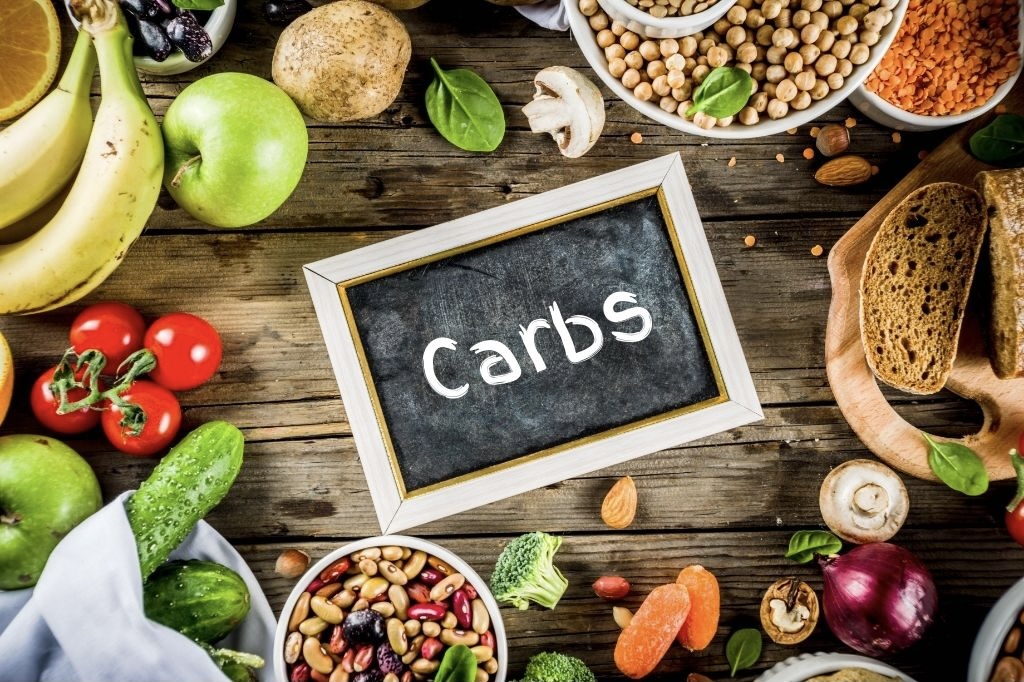In part two of my deep dive into the three macronutrients (macros), this month I’m focusing on carbohydrates, most commonly known as carbs. And while carbs are still getting sort of a bad rap, they really are important to a healthy diet and overall optimal health
If you missed last month’s post about protein, you can read it here.
What are carbs?
To keep it simple, carbs are made up of building blocks of sugar. Our bodies break down carbs into glucose, which is then used to fuel the cells, tissues, and organs in our bodies. Based on the number of sugars they contain, carbs are classified into two categories, simple and complex, although there are more categories within these two categories.
Simple carbs
Simple carbs enter the bloodstream quickly, and they can be found naturally in dairy products and fruits and in more processed and refined products like fruit juice, candy, sugar, soft drinks, syrups, cakes, cookies, and so on. The forms of sugars in these types of carbs are glucose, fructose, galactose, sucrose, maltose, and lactose, and they are usually pretty empty calories. Fruits are the exception to this and are included in this category because of the type of sugars they contain. They are healthy simple carb options because they are loaded with fiber, vitamins, and minerals.
Complex carbs
Complex carbs enter the bloodstream more slowly, and the majority of the carbs we eat should be complex carbs. Some examples of complex carbs are legumes, brown rice, quinoa, whole grain products (cereals, breads, pastas, etc.), and root/starchy vegetables. Complex carbs are usually high in fiber, which contributes to the slower digestion process of complex carbs, which keeps your energy and blood sugar levels more constant.
The functions of carbs
Carbs—the healthy kind, of course—are very important to our bodies, and if we don’t eat enough carbs, our health can suffer. Here are some functions of carbs:
- Main energy source for the body.
- Preferred energy source for the brain and nervous system
- Burn fat—we “burn fat in a carbohydrate flame.”1
- Help preserve muscle. When we don’t eat enough carbs, our bodies can break down muscle for energy.
- Keep our digestion system healthy and running smoothly.2
- The fiber in carbs can keep our hearts healthy and reduce our risk of diabetes.3
- Help us maintain a healthy weight due to the fiber they contain, which helps keep us feeling fuller longer and less apt to overeat.
Learn more about fiber and all its amazing benefits here.
How many carbs should we be eating?
The recommended dietary guideline is that carbs make up 45-65% of total daily calories. This is a very general and wide recommendation, and here are a couple of things to think about when figuring out the best intake of carbs for you and your nutrition plan:
- If you’re doing heavy training of any type (cardio and/or weights), you might need to eat more carbs.
- If your body handles fats better than carbs, you might need to limit your carb intake and make sure that any carbs you eat are high quality.
When figuring out calories from carbs, each gram of carbs = 4 calories.
It can be tricky to not overdo our carb consumption, especially where the simple, refined carbs are concerned as so many delicious foods are simple carb-loaded. In fact, A recent study published in JAMA (The Journal of the American Medical Association) found that Americans are eating 42% of their total daily calories as refined carbs! That, alone, makes eating a healthy and nutritious diet—a diet loaded with healthy carbs, proteins, and healthy fats—even trickier.
If we eat too many carbs, it can cause our blood sugar levels to rise, which signals our bodies to make more insulin, which then tells our cells to save the extra glucose made from those carbs as fat. If those extra carbs (glucose) aren’t used by our bodies for energy and stored as fat instead, it can lead to obesity, diabetes, and other health issues.
Sources of Carbs
Carbs can be found in a variety of foods:
- Grains: Breads, cereal, oats, pasta, rice, quinoa, couscous, and so on.
- Fruits
- Vegetables: Root/starchy vegetables are higher in carbs.
- Legumes: The entire bean family
- Dairy products
Carbs Tips
Here are six tips to help you choose the right way to add carbs to your nutrition plan:
Tip #1. Understanding the carb content of foods. If you don’t understand exactly what you’re eating, it’s hard to make good decisions for you, your health, and your health-related goals, so keep these two things in mind when looking at food labels:
- High carbohydrate foods contain 15+ grams
- Low carbohydrate foods contain < 3 grams
Tip #2. Eat whole fruits instead of fruit juice when possible. Those delicious fruit juices can be so tempting, and they do have their place in our nutrition plans. But here are some things to keep in mind before juicing up:
- When fruit is juiced, the skins are removed, which also removes vitamins and minerals.
- Fruit juice contains a lot less of the fiber you’ll find in whole fruit since a lot of fiber is lost in the juicing process.
- When you eat whole fruit, you’ll feel fuller longer due to the extra fiber and the added digestion needed to process whole fruit. If losing weight is your goal, feeling fuller longer will help to curb overeating.
- If you’re watching your weight and/or want to eat higher quality food, you’ll consume fewer calories and sugar. On average, a cup of fruit juice will contain at least twice the amount of sugar and close to double the calories (or more) as a whole piece of fruit.
Tip #3. Start the day with a whole grain. Whole grains are loaded with vitamins, minerals, and that all-important fiber to help you get an energetic and healthy kick-start to your day. Some great options are oatmeal (steel cut or old fashioned), cereal (aim for one with at least 4 grams of fiber per serving), or whole grain bread-type products (look for products with 1.5+ grams of fiber per serving/slice).
Tip #4. Include a carb with every meal. This is a simple way to ensure you’re getting the carbs you need throughout the day and overall for the day. Fruit, veggies, whole grains. legumes, and so on are great options to think about!
Tip #5. Keep healthy options readily available. The less prep time needed = the more likely you are to actually eat these healthy options. Cut up vegetables ahead of time, batch cook whole grains and refrigerate or freeze them in single serving sizes, and keep fruits and vegetables fully visible (on the counter, in the fridge).
Tip #6. It’s all about balance. Enjoy those refined, treat-like carbs in moderation, but make sure most of your carb consumption is from the healthy carbs list.
Carbs are not bad. They are essential for optimal health and quality of life, so make sure you’re including them in your nutrition plan on a regular basis. What are your favorite carbs? Mine? Fruit, most definitely. Especially raspberries (#1), blueberries, blackberries, grapes, peaches, apples, mangos…basically, all the fruit. 😉
Have additional questions about carbs or any other health and fitness topic? I’m always looking for new topics to write about, so please leave a comment below.
Disclaimer: The views, opinions, positions, research, analyses, strategies or other information discussed here are my views and are for informational purposes only. Please consult your physician or other health care professional before beginning this or any nutrition program or before incorporating any of this information into your health and wellness program.
Sources used:
1. https://www.bicycling.co.za/nutrition/5-reasons-eat-damn-carbs/
2. https://www.nutritionnews.abbott/healthy-living/diet-wellness/carbohydrates-the-role-they-play-and-why-you-need-them/
3. https://www.healthline.com/nutrition/carbohydrate-functions#TOC_TITLE_HDR_7







Leave a Reply